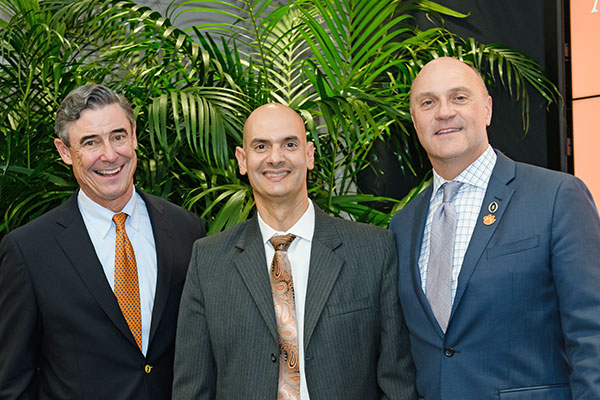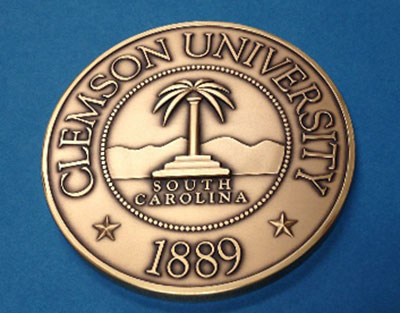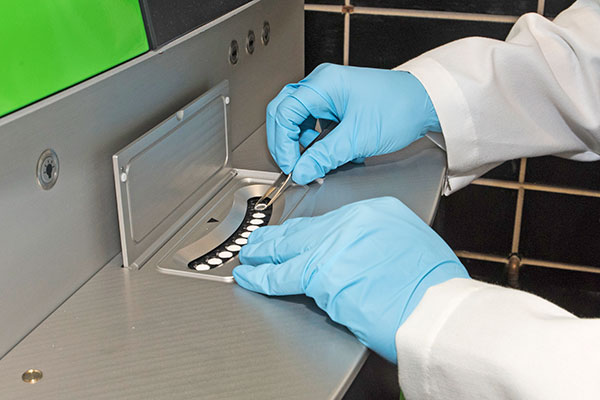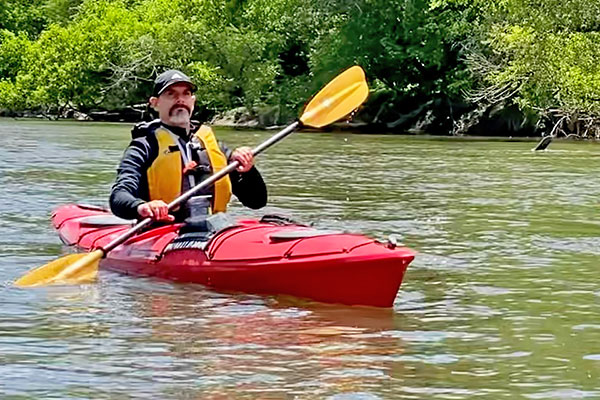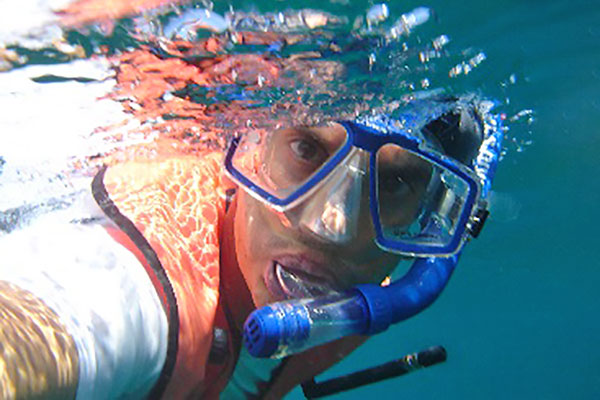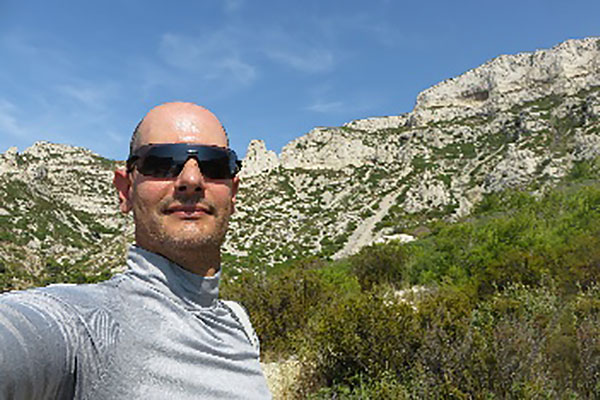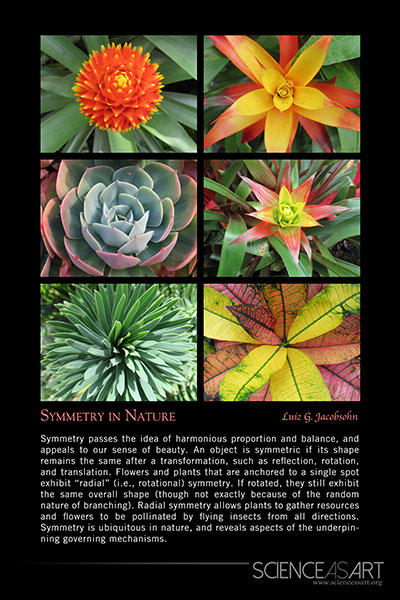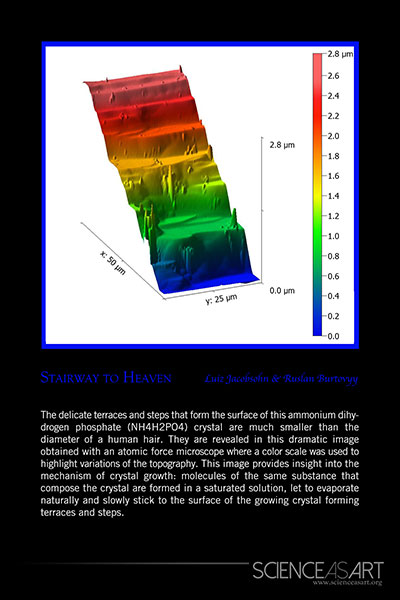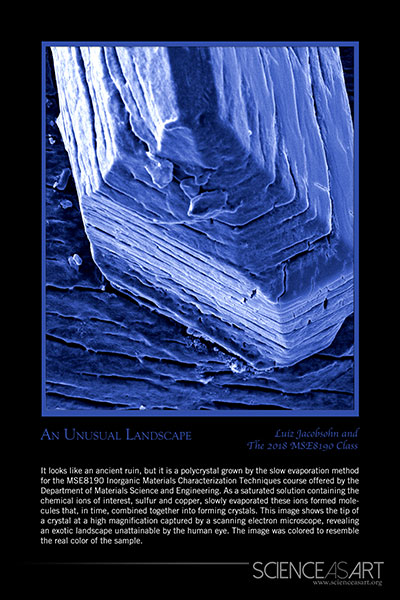Overview
About
With over 20 years of experience in establishing structure-property relationships, Dr. Jacobsohn leads a team of motivated students in research. The team members are composed of undergraduate and graduate students, many of whom are recipients of assistantships. The research lab, The Light Factory, consolidates Dr. Luiz Jacobsohn’s laboratories and resources to synthesize, process, and characterize luminescent materials.
Education & Research
Experience
Dr. Luiz G. Jacobsohn obtained a B.Sc. in Physics in 1992, an M.S. degree in Materials and Metallurgical Engineering in 1994, and a D.Sc. in Physics in 1999 from the Pontifical Catholic University of Rio de Janeiro, Brazil. He joined the Materials Science and Technology Division of Los Alamos National Laboratory in 2002 as a postdoctoral research associate.
Later, in 2005, Jacobsohn was converted to a limited-term technical staff member in the same Division. In 2009, he joined Clemson University’s Department of Materials Science as a research faculty.
Presently, he is an associate professor with the Department of Materials Science and Engineering. He is a researcher affiliated with the University’s Center for Nuclear Environmental Engineering Sciences and Radioactive Waste Management (NEESRWM) and the University’s Center for Optical Materials Science and Engineering Technologies (COMSET).
Professional Service
Member of the American Ceramic Society, Glass and Optical Materials Division (GOMD)
Member of the Electrochemical Society, Luminescence and Display Materials (LDM) Division
Advisor of the Clemson University Chapter of the Society of Hispanic Professional Engineers (SHPE), 2014 – 2020
Co-chaired the 6th International Workshop on Photoluminescence in Rare Earths: Photonic Materials and Devices (PRE’16) in 2016
Managing Guest Editor of the PRE’16 conference proceedings published as a special issue of Optical Materials in 2017
Member of the Organizing Committee for the 16th International Conference on Scintillating Materials and their Applications (SCINT)
Co-organizer of the symposium “Application of Luminescent Materials for Radiation Detection” as part of the International Chemical Congress of Pacific Basin Societies (Pacifichem), Honolulu, HI, December 16-21, 2021
Career Achievements
Accolades
In 2020, Luiz Jacobsohn was a recipient of the David and Mary Ann Bishop Dean’s Professorship Award. He has received the Board of Trustees of Clemson University Award for Excellence in 2018, and the College of Engineering, Computing and Applied Sciences Dean’s Professorship Award, Clemson University, also in 2018.
Dr. Jacobsohn is the recipient of the prestigious National Science Foundation CAREER award in 2017. The Faculty Early Career Development (CAREER) Program is a Foundation-wide activity that offers the National Science Foundation’s most prestigious awards in support of early-career faculty who have the potential to serve as academic role models in research and education and to lead advances in the mission of their department or organization.
20+ years of experience in materials synthesis, processing, and characterization
150+ publications, 1 patent issued, 1 book chapter have been authored and co-authored
3300+ citations have been received, covering his research extensive research
16+ years with Clemson University’s Department of Materials Science and Engineering
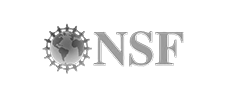

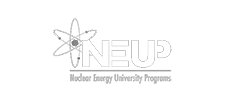



Focus Areas & Interests
Pursuits
For Dr. Jacobsohn, his interests are in the areas of scintillators, OSL dosimeters, and luminescent materials in general, including transparent ceramics, nanoparticles, glasses, single crystals, and thin films. Jacobsohn’s research is or has been funded by the National Science Foundation (NSF), the Defense Threat Reduction Agency (DTRA), Nuclear Energy University Program (NEUP), Savannah River National Laboratory (SRNL), Los Alamos National Laboratory (LANL), and the South Carolina Space Grant Consortium.
In his free time, Luiz enjoys playing tennis, biking, hiking, traveling, reading books, watching movies, and having a good conversation.
Select Invited Presentations
Professional Lectures
Luiz Jacobsohn has been invited across both the United States and the globe to give presentations at annual meetings and conferences.
7th International Conference on Excited States of Transition Elements, Kudowa Zdrój, Poland, September 08-13, 2019
8th International Conference on Optical, Optoelectronic and Photonic Materials and Applications, Maresias, São Paulo, Brazil, August 26-31, 2018
“Crystalline Materials for Electrical, Optical, and Medical Applications” symposium of the 42nd International Conference and Expo on Advanced Ceramics and Composites, Daytona Beach, FL, January 21-26, 2018
“Luminescence and Display Materials: Fundamentals and Applications” symposium of the 2017 Fall Electrochemical Society Meeting, National Harbor, MD, October 1-6, 2017
18th International Conference on Luminescence, João Pessoa, Paraíba, Brazil, August 27-September 1, 2017
“Optical and Electronic Materials and Devices – Fundamentals and Applications” symposium of the Annual Meeting of the Glass & Optical Materials Division of the American Ceramic Society in conjunction with the 12th Pacific Rim Conference on Ceramic and Glass Technology, Waikoloa, HI, May 21-26, 2017
STEAM Education
Outreach
Luiz created and maintains the public group “Luiz’s World of Materials” on Facebook – a page about cool, curious, and instructive things about materials, their science, engineering, and technological applications – where he shares selected news on materials discovery and development that call his attention.
If you want to join, please visit on Facebook.
It was love at first sight when Luiz found out about Science As Art!. Science as Art is an outreach event that hopes to draw interest to the STEM fields through visually captivating artwork. The resulting exhibits have drawn the attention of scientists, artists, members of the community, and professional organizations.
Each year, the exhibit goes on the road to Greenville’s Artisphere. Set up in the STEAM Exhibit tent, visitors can view the intricate and beautiful displays of science. Jacobsohn and his students have participated in Science As Art every year since 2015.
The Light Factory
Key Capabilities
The Light Factory consolidates Dr. Jacobsohn’s laboratories and resources for the synthesis, processing and characterization of luminescent materials.
Fume Hood and Auxiliary Instrumentation
Fume hood and auxiliary instrumentation including centrifuge, ultrapure water filtration system, hydraulic hand press, vacuum oven, for the synthesis of inorganic powders with fine composition control.
High Temperature Tube Furnace
High temperature tube furnace with atmosphere control/vacuum, high temperature box furnaces.
Horiba LabRAM HR Evolution Raman Microscope
Horiba LabRAM HR Evolution Raman confocal microscope with 4 excitation lasers at 355, 405, 532, and 785 nm, mapping capability with +3 mm accuracy, hot stage with vacuum/controlled atmosphere, broad spectral range (down to about 100 cm-1), high-resolution diffraction gratings and internal reference for intensity and spectral correction.
Edinburgh FLS 1000 Spectrofluorometer
Edinburgh FLS 1000 spectrofluorometer equipped with double monochromators for excitation and emission photoluminescence (PL). Measurements as a function of temperature are possible with an ARS closed-cycle He cryostat with Lakeshore temperature controller for optical and electrical (4-point probe) temperature-dependent measurements within 10 to 800 K. Photoluminescence quantum efficiency determination with 120 mm dia. integrating sphere.
Fluorescence Lifetime
Fluorescence Lifetime with picosecond pulsed LEDs or lasers for fast lifetime (~1ns to ~µs), and pulsed Xe lamp for phosphorescence (>~µs).
Thermoluminescence
Thermoluminescence (TL) using a Lexsyg Research spectrofluorometer (up to 600 °C) where TL spectroscopy (TL emission spectrum x temperature) is also possible. A Harshaw TLD 3500 (up to 400 °C) is also available.
Radioluminescence
Radioluminescence (RL) using a Lexsyg Research spectrofluorometer with X-ray excitation, detection in the UV-visible range, from RT to ~500-600 oC; single crystal and powder references are available for relative luminosity determination.
Optically Stimulated Luminescence
Optically Stimulated Luminescence (OSL) using Lexsyg Research spectrofluorometer with blue and green excitation.
Nuclear Spectroscopy
Nuclear Spectroscopy using numerous radioactive sources within about 14 to 662 keV and benchtop single crystal scintillators for relative luminosity, energy resolution and linearity of the energy response.
University’s and MSE Department’s facilities
These facilities are complemented by University’s and MSE Department’s facilities for materials characterization: XRD, ATR-FTIR, optical transmission/absorption spectroscopy (‘UV-vis’), electron microscopy (SEM, TEM, EDX), XPS/AES.
Contact
Prof. Luiz Jacobsohn
Department of Materials Science & Engineering
Clemson University
515 Calhoun Dr., Sirrine Hall #161
Clemson, SC 29634, USA
--------------------
☏ 864-656-5965
📠 864-656-5973
✉ LUIZ@CLEMSON.EDU



